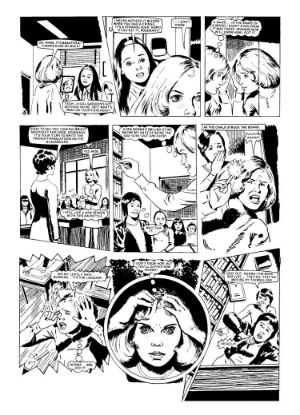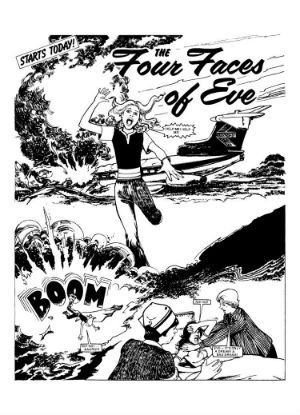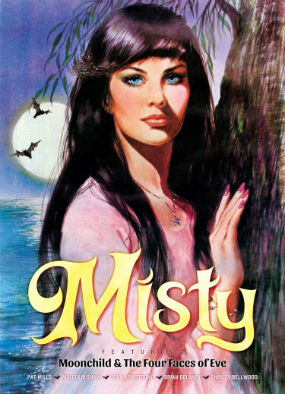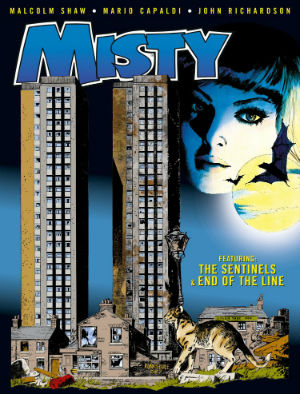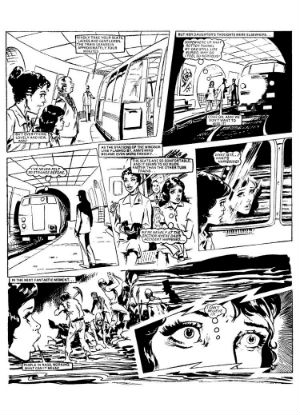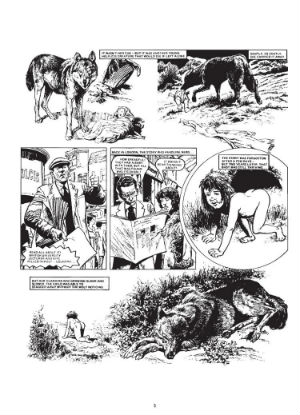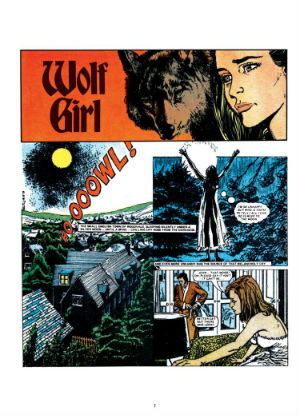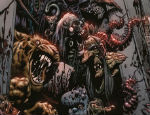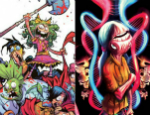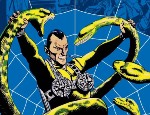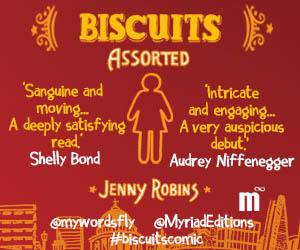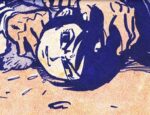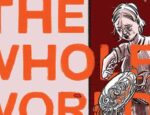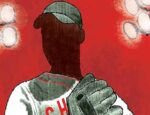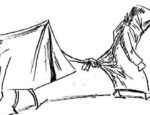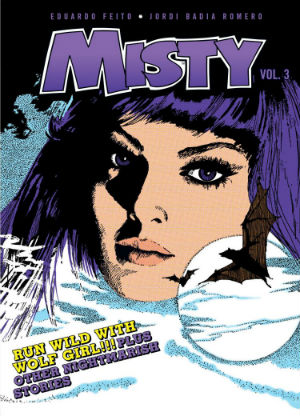 Filled with supernatural thrillers that were surprisingly uncompromising in their approach, Misty is one of the great cult publications of British comics history. Debuting in the late 1970s, and running for just a couple of years, it’s one of the most fondly remembered anthology weeklies of the era not just for its eerie thematic allure but also for the quality of the strips within its pages. The title was the brainchild of the legendary Pat Mills who was looking to do for the comics market for girls what he’d achieved with the boys side in 2000 AD. Longer-term Broken Frontier readers may remember that we were the first site to break the news here that Misty reprint volumes were in the offing way back in 2014.
Filled with supernatural thrillers that were surprisingly uncompromising in their approach, Misty is one of the great cult publications of British comics history. Debuting in the late 1970s, and running for just a couple of years, it’s one of the most fondly remembered anthology weeklies of the era not just for its eerie thematic allure but also for the quality of the strips within its pages. The title was the brainchild of the legendary Pat Mills who was looking to do for the comics market for girls what he’d achieved with the boys side in 2000 AD. Longer-term Broken Frontier readers may remember that we were the first site to break the news here that Misty reprint volumes were in the offing way back in 2014.
To date, Rebellion have reprinted three volumes of Misty material, taking the weekly serialised strips of 4-5 pages and collecting generally two complete stories per album-sized edition. The titular character’s role as host of proceedings is thus largely excised from these books but her presence is felt visually through cover representations, as well as a short dedication piece by Julia Round in the first book to artist Shirley Bellwood who based the character’s look on her own image.
Many of the comic’s features took their influence from wider pop cultural phenomena or from classic standards of the horror form. Volume 1 reprints one of the most well-remembered serials ‘Moonchild’ (below left) which follows the story of Rosemary Black, cruelly treated by her mother and also dealing with the burgeoning psychic powers that are a part of her family heritage.
Written by Pat Mills, it has an obvious Carrie vibe to it but it’s all the more relatable in that the true horrors at its core are those of parental neglect and schoolyard bullying. John Armstrong’s packed pages have a clarity and realism that make the supernatural elements all the more disturbing given the otherwise normal and mundane routine of Rosemary’s world. A coming-of-age story with a fiercely climactic finale it’s one of the strongest reprints in these books.
Also in Volume 1 is Malcolm Shaw and Brian Delaney’s ‘The Four Faces of Eve’ (above right) which provided the readers of the time with more uncaring authority figures in villainous roles to be rebelled against. This tale sees amnesiac schoolgirl Eve Marshall haunted by the memories of the deaths of three other girls and attempting to understand her own connection to them. There’s more than a hint of dramatic irony here as the reader begins to put together the jigsaw pieces of the mystery before the protagonist does and, if the ending is perhaps a little pat in its resolution, it’s a forgiveable indulgence. Delaney has a particularly nice line in melodramatic visual characterisation that gives the cliffhangers of each episode an extra emotional punch.
The second compilation revisits arguably the standout story of the Misty run in the shape of ‘The Sentinels’ (below left). Two tower blocks stand next to each other but while one is fully populated the other is empty and shunned. Teenager Jan Richards and her family soon find out why when they’re made homeless and take refuge in its dilapidated environs, only to discover that within is a portal to a parallel Earth where the Nazis invaded the UK in the 1940s and alternate versions of themselves exist.
Malcolm Shaw’s storyline emphasises the human drama over the sci-fi leanings with Mario Capaldi’s art again contrasting the everyday with the unlikely to powerful effect. This was the strip given such a brilliant contemporary continuation by Hannah Berry and Ben Willsher in last year’s Scream! and Misty Special and it’s a great shame that unforgettably socially conscious piece wasn’t followed up in this year’s edition. The ending of the original serial is horrifically bleak in many respects and perhaps rather prescient as well…
Completing book two is Shaw and John Richardson’s ‘End of the Line…’ (above right) which concerns itself with another young central character Ann and her search for her father, believed killed in engineering works in the London Underground tunnels but who she fervently believes to still be alive. Richardson gives us a number of memorable visual set pieces in terms of action sequences but this story of anachronistic Victorian menaces, immortality and strange underground societies is a little muddled in focus and perhaps a touch overlong as well.
The final collection is tinged with an element of sadness. While the artistic credits are mostly intact the writers of the stories within its pages are unknown. This may seem shocking given its contents are relatively recent but is hardly unique. Volume 3 re-presents ‘Wolf Girl’ – the adventures of Lona, brought up by wolves before being returned to civilisation as a child – alongside a number of lycanthropic short stories; the latter are fun twisting tales with some neat and playful manipulations of familiar themes.
‘Wolf Girl’ (above) is in some ways a more pedestrian affair than the other reprinted serials in that in relative terms it’s more subdued in concept without overt supernatural elements, with the bulk of the narrative following Lona as she returns to the wild and leads her own pack of wolves away from human menaces. But Eduardo Feito’s art captures the natural world and the lupine inter-relationships of the (obviously) largely silent cast with careful attention to detail. It’s not in the league of John Stokes on Marney the Fox but it elevates an otherwise somewhat clichéd premise to an engaging and compelling level of storytelling.
It’s pleasing to see as well in this most recent book that the original colour pages (along with relevant colour covers) have all been reprinted with their original hues.
While to a degree the stories are very much of their time – and the cultural references obviously dated for a 2018 younger readership – the themes of the Misty serials remain universal. It really is such a joy to see this classic material being brought to new audiences by Rebellion. These volumes provide the kind of showcase for the history of British comics that we could have only dreamed of a few short years ago and with the publisher picking up the rights for even more properties of late the future looks very bright indeed for enthusiasts of UK comics of yesteryear.
Pat Mills, Malcolm Shaw (W), Shirley Bellwood, John Armstrong, Brian Delaney, Mario Capaldi, John Richardson, Eduardo Feito, Jordi Badia Romero (A) • Rebellion





